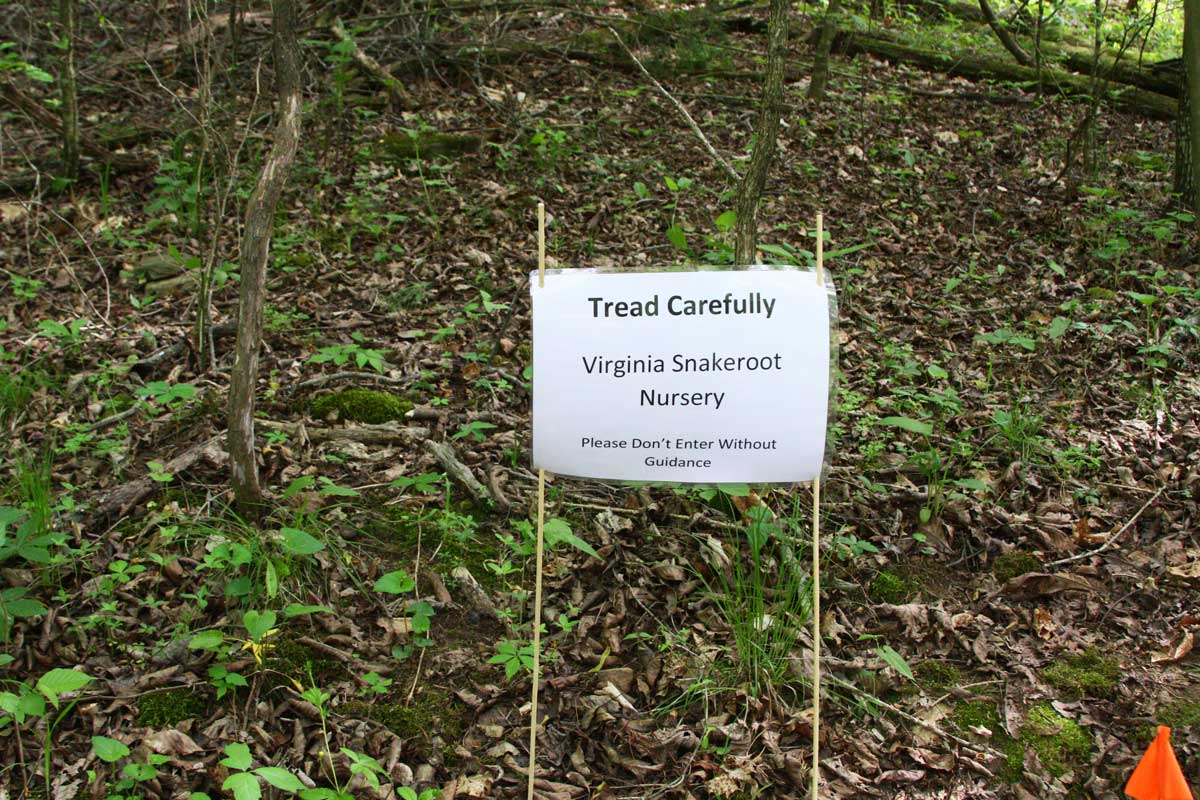
I went out to check on the Virginia snakeroot nursery the other day and was mortified to find nothing. Not. One. Plant.
Virginia Snakeroot … What’s That?
Now, you might be wondering just what’s so important about a plant that really looks like nothing much more than a weed in the woods. It’s a plant of interest to me for a couple of reasons. First, it’s a medicinal plant with a history of being used to treat snakebites and mad dog (rabies). I’m not likely to use it for either of these, but I do have an affinity for medicinal plants.
Second, it’s harder and harder to find because there’s actually a market for the roots. People dig them and then sell them to botanical purveyors who then sell them to pharmaceutical or herbal companies.
It Even Has Look-Alikes
There’s another plant that has very similar leaf shape, but it isn’t snakeroot.

There’s a long article on the plant and how it was once used at the Herbs2000.com website.
For the past several years I’ve searched our property for this plant and never could find any. In 2015 I found the first plant, but then a major flash flood erased it from the site. Then last year while I was making trails in the Ginseng Habitat Demonstration Garden, I noticed a whole mess of the plants on a little knoll under the cedar trees.
I was so excited. I’d even placed a sign at the entrance to warn visitors not to enter that part because there were so many it would be hard to walk around them without stepping on some. I wanted to collect seeds and propagate more of them.
Poof!
And now they are gone. Completely disappeared. The ground had been disturbed by an armadillo, but I don’t think an armadillo would eat snakeroots. I didn’t see any footprints that might indicate some roaming root digger had come by. Virginia snakeroot is one of the wild plants that botanical buyers purchase, but these plants were so small it would take a ton of the little roots to earn the $30 or so per pound that they can fetch.
Besides that, there were ginseng plants in the vicinity and I can’t see a poacher taking the snakeroot without also taking the ginseng.
So what happened to them?
I think I figured out the answer.
Butterflies.
Or more specifically, caterpillars of the Pipevine Swallowtail. These butterflies are not the pollinators for Virginia snakeroot, but the pipevine plants are the host plants for their larvae. Virginia snakeroot is one of the pipevines, as is wild ginger and Dutchmen’s pipe vine.
While we have lots of wild ginger around, we don’t have many of the Dutchmen’s pipe and I’ll bet what happened to my plants is that they were eaten by the larvae of butterflies. Actually, they weren’t ‘my’ plants. I’m sure the butterflies were excited to see them and call them theirs, too.
It’s the explanation that makes the most sense. If that’s the case, they’ll be back next year. I can find a way to protect a few plants and share the rest with the butterflies. Keep your fingers crossed!



Leave a Reply